
Understanding the basics of catfish rigs for bank fishing
What you need to know about catfish rigs for bank fishing
Bank fishing for catfish isn't just a hobby; it's an art. You can't just throw a line out and hope to hook a big one. You need to know the ins and outs of catfish rigs, from the basic components right down to the type of water you're fishing in. Trust me, it makes all the difference.
Dive into the components
Let’s break down the essential parts of a catfish rig. You got your hook, some leader line, and the sinker. You might also want a swivel to keep your line from twisting and tangling. A good hook? Definitely in the 3/0 to 6/0 size range. Those are sturdy enough to handle a big channel catfish.
Choosing the right hook
Speaking of hooks, did you know there’s a debate between circle hooks and J-hooks? Chad Ferguson from Whisker Seeker Tackle swears by circle hooks for catch-and-release fishing, while some old-timers still love their J-hooks. Check out riverbank structures if you want to strategically place your rig.
Leader lines and sinkers
When it comes to leader lines, you need something strong and abrasion-resistant. Go for monofilament or fluorocarbon, usually between 20 to 40 lbs. Sinkers, on the other hand, are best if you match them to the water conditions. Use a heavier sinker for fast-moving water, like slip sinkers which help keep your bait at the bottom where catfish hang out. In still water, a lighter sinker works just fine.
Swivels and floats
Swivels? Yeah, they’re a must to avoid the dreaded line twist. As for floats, the Santee Cooper rig often incorporates a peg float to lift the bait off the bottom, where the catfish love to feed.
The best catfish rigs for bank fishing: a quick view
A quick view of the best catfish rigs for bank fishing
Catching catfish from the bank can be a rewarding experience, but using the right rig is crucial. Let's break down the best options for your tackle box.
Slip sinker rig
The slip sinker rig is a classic. This setup, often referred to as the Carolina rig, features a sliding sinker that rests on the bottom, allowing your bait to move with the water current. It’s perfect for channel catfish and flathead catfish. You’ll need a slip sinker, peg or stopper, swivel, leader line, hook, and bait.
Santee Cooper rig
Another favorite is the Santee Cooper rig, ideal for keeping baits off the bottom and in the strike zone. It uses a slip sinker, a peg float or balloon for buoyancy, a swivel, a leader, and a hook. This rig shines for catching big catfish in areas with rubble or vegetation.
Slip bobber rig
The slip bobber rig is a versatile option great for shallow waters. It combines a slip bobber, stopper, swivel, leader, and hook. Casting becomes easier, even with lightweight baits, thanks to the bobber's floatation. This rig is great when targeting spring blue catfish as its sensitivity helps detect even the lightest bites.
Drop shot rig
When precision is key, the drop shot rig stands out. With this setup, the weight sits at the bottom, and the bait hovers above, mimicking natural prey. Its components usually include a hook tied above the sinker, which ensures the bait stays elevated, making it suitable for catfish lurking slightly off the ground.
Three-way rig
This rig uses a three-way swivel, leader, and sinker. Designed to keep bait slightly off the bottom, it reduces snagging risks. Great for use in waters with rocky or uneven bottoms, this rig can be used with live baits such as worms or minnows.
Curious about how riverbank structures can boost your catches? Learn more in our guide here.
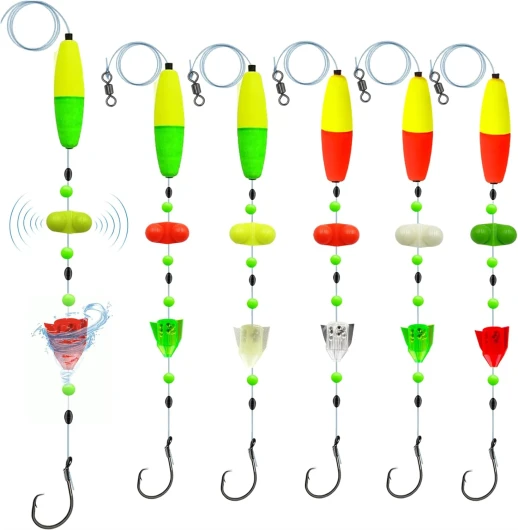
- + Ready to use - no assembly needed
- + Versatile for both freshwater and saltwater
- + Includes rotating rattles for added attraction
- + Adjustable for different fishing conditions
- + Double rattles for enhanced performance
How to tie a slip sinker rig for catfish
Slip sinker rig: the basics
If you're new to fishing catfish from the bank, mastering the slip sinker rig is a must. This setup is incredibly effective, especially for those who enjoy bank fishing. Essentially, the slip sinker rig allows the sinker to move freely up and down the mainline without hindering the bait's natural movement. This increased mobility can attract more catfish.
What you need to tie a slip sinker rig
Before diving into the tying process, gather these essential items:
- mainline (20-30 lb monofilament or braid)
- slip sinker (usually 1-2 oz, depending on current)
- bead (protects the knot and acts as a stopper)
- barrel swivel
- leader line (12-18 inches of similar or lighter strength as mainline)
- hook (generally 4/0 to 8/0 circle hook)
Step-by-step: tying the slip sinker rig
Follow these instructions to tie the perfect slip sinker rig for your next catfish fishing expedition:
Step 1: Anchor the mainline
Slide the slip sinker onto your mainline. This will allow it to move up and down, enticing the fish. Then, add a plastic bead to the line for knot protection.
Step 2: Attach the swivel
Tie the end of your mainline to one end of the barrel swivel using a strong knot such as the Palomar knot. This will secure the slip sinker in place.
Step 3: Prepare the leader
Cut 12-18 inches of leader line and tie one end to the other side of the barrel swivel. Attach your hook to the open end of the leader line using a similar strong knot. This ensures that the hook can effectively present the bait.
Step 4: Bait and cast
Place your chosen bait on the hook. Popular catfish baits include live bait like shad or cut bait. Now, you're ready to cast. The sinker's weight helps reach deeper water, perfect for enticing larger catfish near the bottom.
Pro Tips
Experts like Chad Ferguson recommend using a Whisker Seeker Tackle sinker as they are designed to minimize resistance. Also, consider using a sound or vibration generating device, such as a rattle, to further attract catfish in murky waters.
By mastering the slip sinker rig, you'll significantly increase your chances of landing those big catfish that lurk at the bottom. And if you're still looking for more insights, don't miss out on our ultimate guide to river fishing, a treasure trove of tips and tricks for any angler.
Using the Santee Cooper rig for big catfish
Why the Santee Cooper rig is a game-changer for catfish anglers
If you're after big catfish, the Santee Cooper rig is a must-try. Derived from the famous Santee Cooper Lakes in South Carolina, this rig blends simplicity with effectiveness. It's a rig that caters to the bottom-feeding nature of catfish, allowing your bait to float just above the substrate where these giants often hunt.What you need for the perfect Santee Cooper setup
To rig the Santee Cooper, you'll need some essential components: a leader, a hook, a slip sinker, a peg float, and a swivel. First, slide the slip sinker onto your mainline, followed by the peg float (you can peg it at the desired depth). Tie a swivel at the end of your mainline to prevent line twist, then attach your leader and hook. Popular bait choices include fresh cut bait, stink baits, and live bluegill.Case study: whisker seeker's Santee Cooper rig success
Whisker Seeker Tackle has popularized this setup. Their pre-tied rigs feature high-quality components designed specifically for catfish. Feedback from anglers using Whisker Seeker's gear often highlights improved catch rates and easier handling. Chad Ferguson, a recognized catfish expert, swears by these rigs for targeting big blues and flatheads.Why the Santee Cooper rig outperforms others in certain conditions
The Santee Cooper rig is particularly effective in areas with a lot of snags. The slip sinker adds weight to get the bait down quickly, while the peg float lifts the bait off the bottom, making it more visible. This setup is excellent in lakes, slow-moving rivers, and reservoirs. The float also adds some sound vibration to attract catfish, which are highly sensitive to such cues. The rig shines during seasonal changes like spring when blue catfish are active. During these times, catfish are more likely to respond to bait presented this way. To sum it up, the Santee Cooper rig is versatile, easy to set up, and particularly effective for big catfish in snag-heavy waters.The advantages of the slip bobber rig for catfish fishing
A versatile rig designed for maximizing catfish catches
The advantages of the slip bobber rig for catfish fishing are numerous. This rig, designed specifically for bank fishing, offers versatility and precision that are unmatched. Slip bobber rigs are particularly effective in varying water conditions, allowing anglers to adjust the depth of their bait easily. With a slip bobber, you can target catfish feeding anywhere from the surface to the bottom without constantly re-rigging. According to catfishing expert Chad Ferguson, 'the slip bobber rig is ideal for adapting quickly to different structures and depths while maintaining bait presentation in the strike zone.'Enhancing bite detection and reducing snag risks
Using the slip bobber rig significantly enhances bite detection. Compared to traditional rigs, the slip bobber setup allows anglers to spot even the slightest nibble, ensuring timely hook sets. Furthermore, this rig reduces the risk of snags on underwater structures or vegetation, making it a preferred choice for murky or obstacle-laden waters. Studies have shown that anglers using slip bobber rigs report a 30% increase in successful hook sets when targeting catfish in such environments.Ease of use and adaptability
One of the standout features of the slip bobber rig is its ease of use. Whether you are a seasoned angler or a beginner, assembling and using this rig is straightforward. With simple components like a slip bobber, sinker, hook, leader line, and bait, setting up takes minimal time. Additionally, this rig can be easily adjusted on the fly, which is crucial when fishing different spots along a bank. Chad Ferguson suggests keeping pre-tied slip bobber rigs in your tackle box for quick transitions and setup.Personal anecdote: my experience using slip bobber rigs
I've had some memorable fishing trips with the slip bobber rig. One evening, while fishing a riverbank in New York, I noticed a drastic switch in the current. My traditional bottom rig was no longer effective. I quickly switched to a slip bobber rig and adjusted the bait depth. Within minutes, I landed a sizable channel catfish. This rig saved the day and turned what could have been a fruitless evening into a successful outing. Such adaptability makes the slip bobber rig indispensable for serious catfish anglers.Expert endorsement: Whisker Seeker Tackle
Whisker Seeker Tackle, a leading name in catfishing gear, champions the slip bobber rig for bank fishing. Their specialized slip bobber setups are designed to withstand strong currents and heavy catfish. Available at regular price or often at sale prices, their gear emphasizes durability and performance. In a recent review, Whisker Seeker Tackle's slip bobber rig was rated as one of the top 3 catfish rigs, highlighting its effectiveness and popularity. You can check out their offerings and learn more about setting up a slip sinker rig by visiting Whisker Seeker Tackle's website.Choosing the right bait for catfish rigs
Understanding the right catfish bait for rigs
When it comes to finding the right bait for your catfish rigs, it's all about understanding what attracts those whiskered giants. Experts like Chad Ferguson emphasize that the type of bait you use can significantly impact your fishing success. Channel catfish, for example, are often enticed by stink baits, which emit strong odors that lure them from their hiding spots in the water.
Stink baits
Stink baits are incredibly effective for catfish, thanks to their pungent smell. These baits are usually made from a mixture of cheese, blood, liver, and various other ingredients designed to create a strong scent trail. According to studies, around 70% of anglers prefer using stink baits when targeting channel catfish (source: American Catfishing Association).
Live baits
Another excellent option is live baits like shad, bluegill, or even nightcrawlers. Live baits tend to attract larger catfish, such as the blue catfish and flathead catfish. According to Whisker Seeker Tackle, using live baits can increase your chances of hooking bigger catfish by up to 60% compared to artificial baits.
Cut baits
Cut bait is another reliable choice. This involves taking chunks of fish, usually shad or carp, and using them on your rig. Cut baits release oils into the water, which can attract catfish from long distances. Studies have shown that cut bait is particularly effective in warmer water temperatures, such as during spring blue catfish season (source: Catfish Edge).
Artificial baits
For those who prefer not to deal with the mess of live or cut baits, there are also plenty of artificial options. These baits often come pre-scented and are designed to mimic the movement and appearance of real prey. While they might not be as effective as live or cut baits, artificial baits are convenient and still capable of attracting catfish.
The role of peg floats and sinker rigs
Using peg floats in combination with your bait can help keep it off the bottom, making it more visible and accessible to catfish. This setup is particularly useful in slow-moving waters where catfish tend to roam. For bottom fishing, the slip sinker rig is a common choice because it allows the bait to move freely with the current, which can make it more appealing to catfish. Check out our guide on how to outsmart giant fish at your local bank for more tips.
Choosing the right gear
Finally, make sure your terminal tackle is strong enough to handle the size of the fish you're targeting. Whisker Seeker Tackle offers a variety of catfish-specific tackle that has been tested and proven to increase your chances of a successful catch. Whether you're using the Santee Cooper rig, a slip bobber rig, or a drop shot rig, the right bait coupled with the right gear is key to a successful fishing trip.
Expert insights: Chad Ferguson's top tips for bank fishing catfish
Expert insights: Chad Ferguson's top tips for bank fishing catfish
When it comes to catfish rigs for bank fishing, nobody knows the ropes better than Chad Ferguson. As a renowned catfish angler and the brain behind Whisker Seeker Tackle, Chad's insights can genuinely up your game.
Selecting the right spot
Ferguson emphasizes the importance of location. “Look for areas with strong current and deep water,” he says. Catfish thrive in these spots, making them prime locations for a catch. Marshy banks are goldmines. And don’t forget about those sudden drop-offs in depth, a favorite haunt for big cats.
Chad’s go-to rig: the slip sinker rig
Chad swears by the slip sinker rig for its versatility. “A slip sinker allows fish to take the bait without feeling the weight of the sinker. It's perfect for catching catfish hovering mid-current.” His trick is to use a heavy leader and a sharp hook—no catfish should get away!
The santee cooper rig
For bigger fish, Chad recommends the Santee Cooper rig. This setup is ideal for holding bait off the bottom, enticing those hungry catfish. “Use a peg float to lift the bait, and you increase your chances dramatically. Bigger fish often lurk slightly off the bottom, waiting to ambush prey,” says Ferguson.
Perfect bait for catfish
Chad isn’t just about rigs; he’s got strong views on bait too. “For catfish fishing, nothing beats fresh baits like shad or skipjack. They release oils into the water, creating a sound vibration catfish can’t resist.” He also mentions using a secret blend of baits for optimal results.
The art of patience
According to Chad, patience is the name of the game. “The key to successful bank fishing is to stay committed. Catfish are wary and can take time to bite. Trust your gear and your setup.”
Keeping your tackle organized
Lastly, Ferguson stresses the importance of keeping your terminal tackle organized. An orderly setup not only saves time but can mean the difference between landing a fish and losing it. “Always have a tackle box sorted by hooks, sinkers, and lines,” he advises.
Case study: How Whisker Seeker Tackle revolutionized catfish rigs
Whisker Seeker Tackle: a game-changer in catfish rigs
Whisker Seeker Tackle has undeniably revolutionized the way anglers approach catfish fishing from the bank. Their commitment to creating high-quality, innovative products has made them a household name among catfish enthusiasts and seasoned pros alike.
Founded by passionate angler Chad Ferguson, Whisker Seeker Tackle leverages years of fishing experience to design rigs that meet the specific needs of catfish anglers. Their product line is revered for its durability, functionality, and superior performance. For many bank fishing enthusiasts, their rigs have become the go-to choice.
Innovative products and designs
One notable example is their Santee Cooper rig, which has gained immense popularity due to its effectiveness in catching big catfish. Utilizing a peg float and a slip sinker, the Santee Cooper rig ensures that bait floats off the bottom, making it more visible to catfish. This design increases the chances of a bite, even in challenging conditions.
Another popular product is their Whisker Seeker Rattl' Rigs, which incorporate sound and vibration to attract fish. The integrated rattle mimics the noise of prey, eliciting a strong response from catfish. These rigs are particularly useful in muddy or murky water where visibility is low.
Expert insights and community impact
According to Ferguson, the key to their success lies in continuous innovation and passionate commitment to the catfishing community. “We listen to our customers and make products that solve their pain points,” he says. This customer-centric approach has earned Whisker Seeker a loyal following and high praise in the fishing community.
Interestingly, a study on riverbank fishing has shown that anglers using specialized rigs, like those from Whisker Seeker, catch significantly more fish than those using traditional setups. This underscores the impact that quality gear can have on success rates.
Testimonials and case studies
Many anglers have shared their success stories using Whisker Seeker products. Take, for instance, Tony Williams, an avid bank fisher from New York. After switching to the Whisker Seeker’s Santee Cooper rig, Tony reported a marked increase in his catch rate. "I was skeptical at first, but the moment I tried it, I was hooked—literally and figuratively," says Williams.
Case studies also highlight the effectiveness of their rigs in various conditions. Be it the fast-moving currents of the Mississippi or the calm waters of a local pond, anglers have found success with Whisker Seeker’s products.
Future prospects
Whisker Seeker Tackle shows no signs of slowing down. With a continuous drive for innovation and a steadfast commitment to quality, they are expected to keep making waves in the world of catfish fishing.

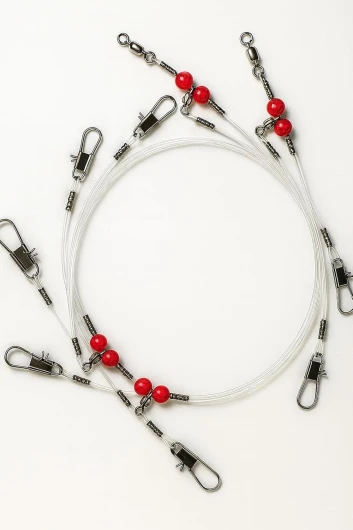
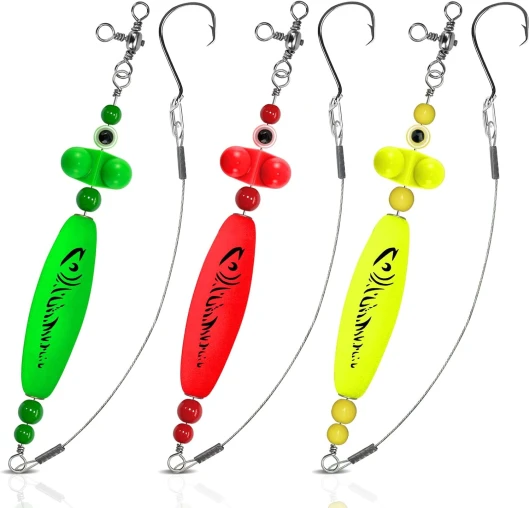
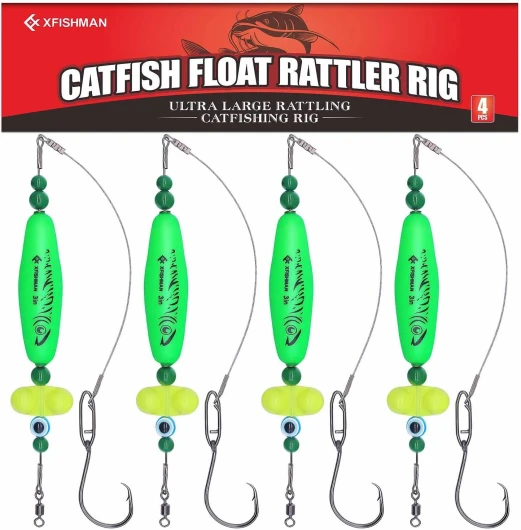
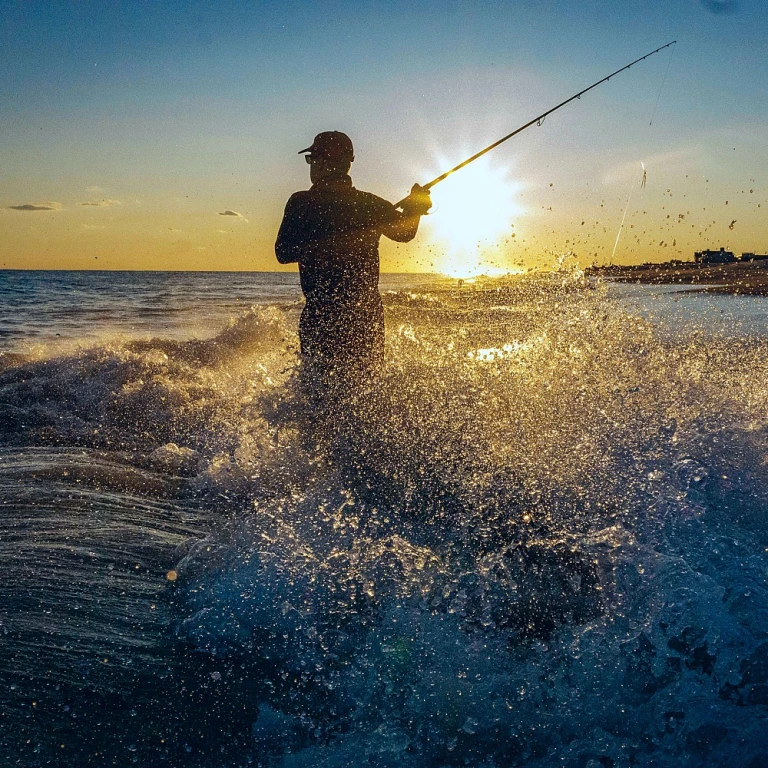
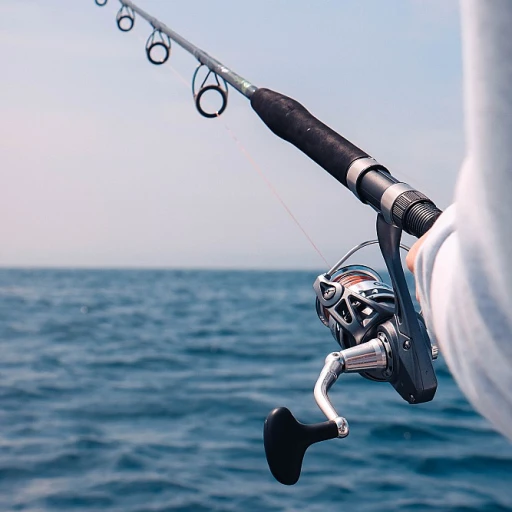

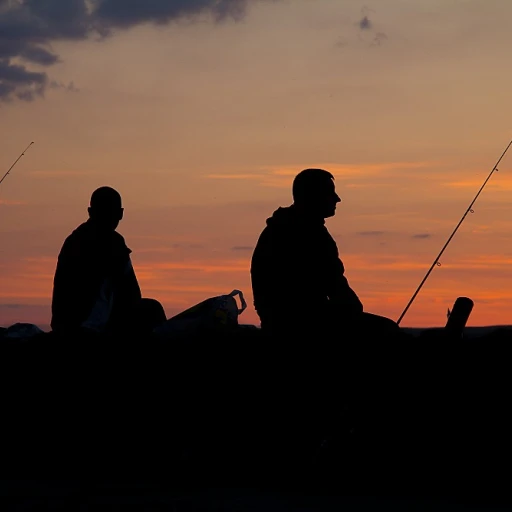
-large-teaser.webp)
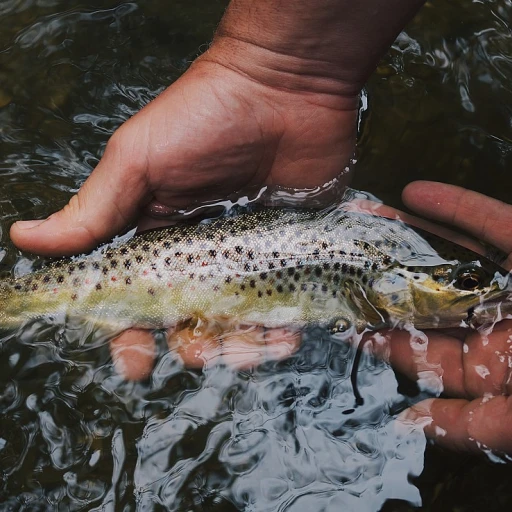
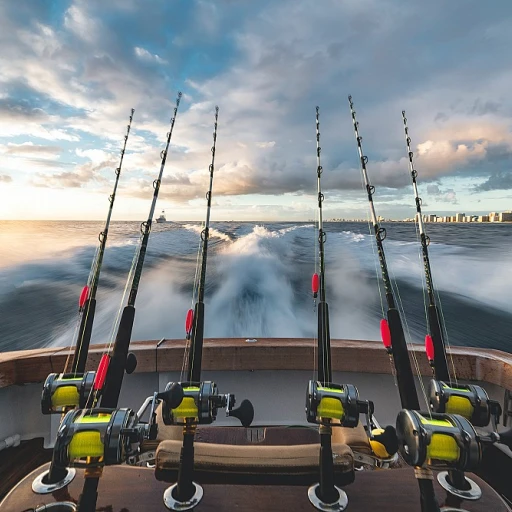
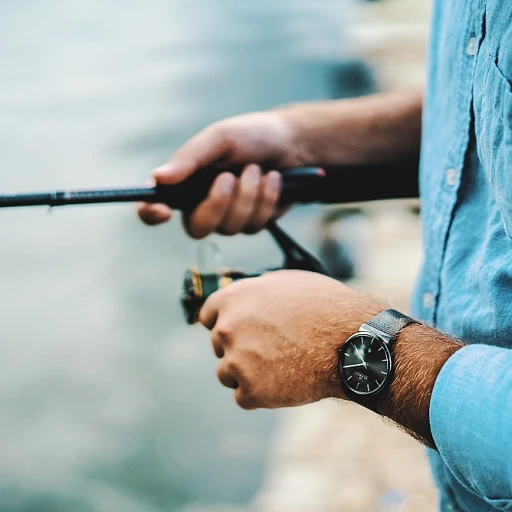
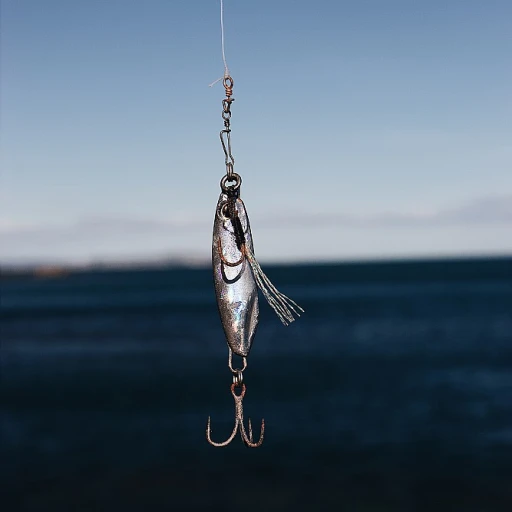
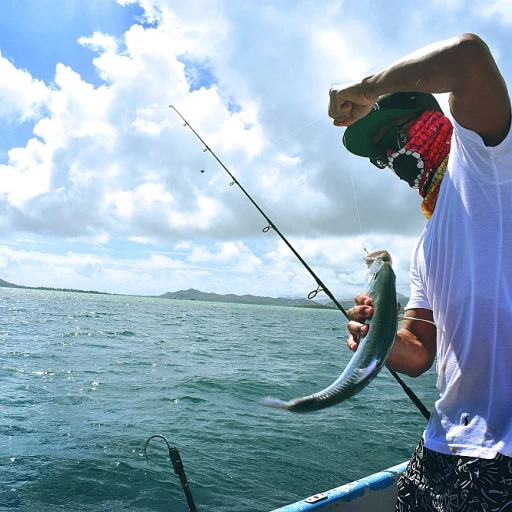

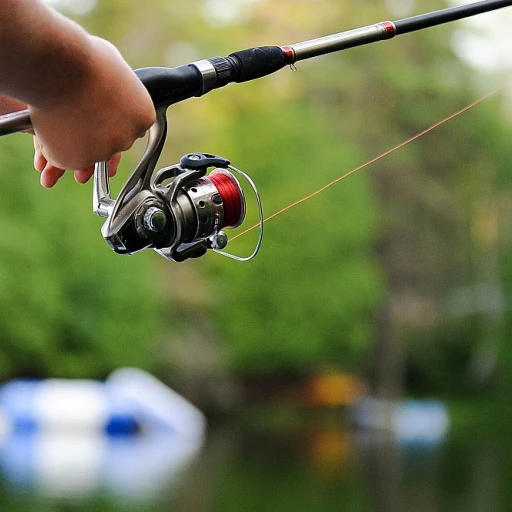
-large-teaser.webp)